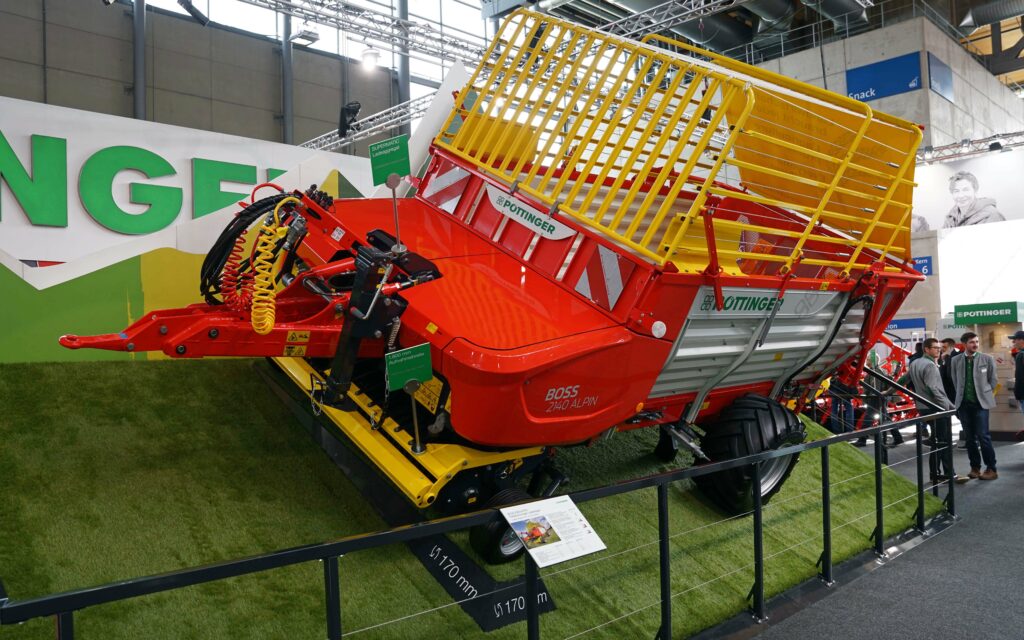Being offshore and on the western edge of Europe, Irish agriculture tends to be treated as an offshoot of our nearest neighbour, yet there are significant differences – not least of which, are the size of farm and the challenging terrain.
These conditions are often overlooked by companies that supply equipment focused on large farms in tractor friendly country with more generous machinery investment budgets.
All is not lost however, for several manufacturers do produce equipment for the Alpine region, which may be equally suitable for the less favoured areas of Ireland – it’s just that they have yet to appreciate the fact and promote them over here.
All manufacturers like to show off their biggest machines at shows as symbols of their achievement and ability – yet Pottinger, for one, did break away from this expectation at Agritechnica last year, with an original demonstration of its Alpine equipment.

The machine being shown was the Alpine Boss 2140 forage wagon, a machine specifically designed for working on slopes.
This machine addresses a major issue with gradients. They tend to disbar the harvesting of the crop with a round baler, which have a high centre of gravity when the rear door is open for ejection, and if orientated with the slope, the bale is likely to roll away.
Alpine safety
Features of the Alpin Boss which allow forage to be collected on slopes, include a low deck height, wide track, and reduced weight.
The pick-up hitch also articulates by 170mm either way to accommodate uneven ground, rather than tipping forces to the trailer.
Small and more stable round balers with chambers of 1m or so are available, but these will lack the work rate of a dedicated forage wagon, albeit smaller than the giant units we are used to in Ireland.
The Boss Alpin 2140 being shown in Germany has a capacity of just 13.5m3.

Before the grass can be collected, it needs to be cut, tedded and rowed, and here there are many other companies with front-mounted Alpine style mowers dedicated to allow working on steep slopes.
The all tend have as low a centre of gravity as possible, are close coupled to the tractor and are light in weight with a low power requirement.
Scaling down
These latter two are features that are normally shunned by Irish farmers as they are repeatedly assured that only the toughest kit driven by big tractors can cope with Irish conditions.
There may be much to be said in favour of this view, but it does not apply across the whole farming spectrum.

The areas for which these machines are likely to be suitable will probably not be producing heavy crops.
Therefore, the power requirement will be lower and the machines will not be receiving as much use as a contractor’s fleet.
Thanks to Computer Aided Design (CAD), modern machinery is also far better designed with stress levels and weak points being calculated and identified long before the first prototypes are assembled.
This ensures that it is a case of using metal where it is needed rather than just welding on more when and where the cracks start to appear.
Altogether, it makes for lighter and stronger frames and hitches.
Saving costs
Lighter machines are also more fuel efficient when going uphill and put less stress on the tractor’s braking and traction levels when heading down the slope, adding to the safety margin.

These advantages are not just confined to hilly areas. Small farms elsewhere can also benefit from less capital intensive machinery that is cheaper to operate, requires smaller tractors and burns less fuel.
There is also the advantage of timeliness with less reliance on contractors, although it may be more labour intensive, yet with the added flexibility, part-time drivers are more easily found.
